The Otterhound: Water-Loving, Playful, and Adorable
Introduction and Breed Background:
Welcome to the enchanting world of the Otterhound Dog! If you're seeking a four-legged companion with boundless energy, a love for water, and a heart as big as the ocean, then look no further. The Otterhound is a rare and captivating breed that will make your life an endless adventure filled with tail wags, laughter, and unforgettable moments.
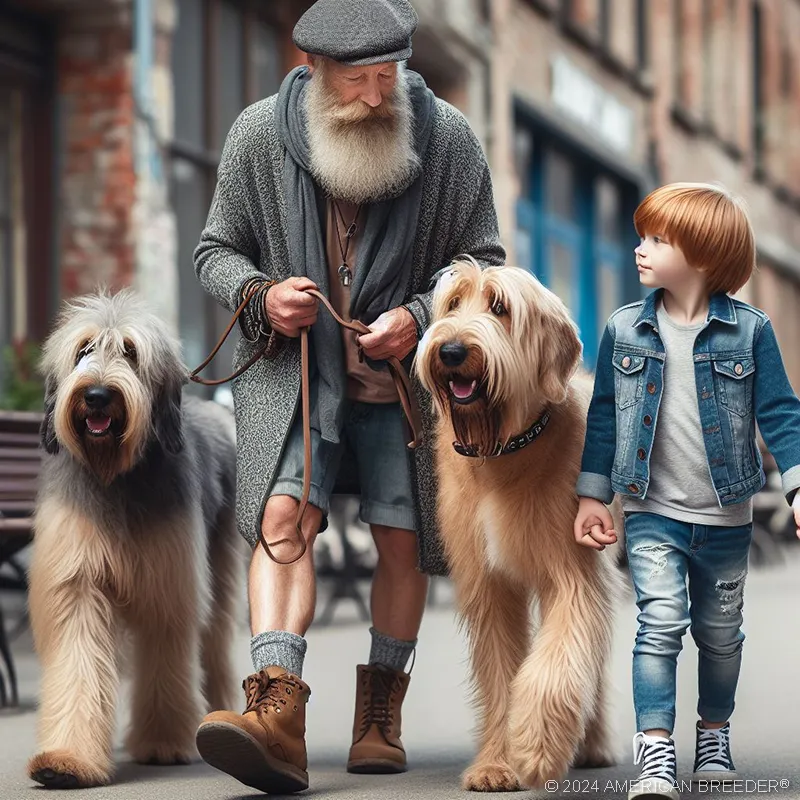 Before you dive into the depths of Otterhound ownership, there are a few things you should know. This breed's history is as intriguing as their playful nature. Bred in England centuries ago, they were originally used for otter hunting, a task that required both brains and brawn. With their webbed feet, water-resistant coat, and incredible scenting abilities, they were the ultimate otter trackers. Though otter hunting is now a thing of the past, the Otterhound's legacy continues as they bring joy and affection to modern-day families.
Before you dive into the depths of Otterhound ownership, there are a few things you should know. This breed's history is as intriguing as their playful nature. Bred in England centuries ago, they were originally used for otter hunting, a task that required both brains and brawn. With their webbed feet, water-resistant coat, and incredible scenting abilities, they were the ultimate otter trackers. Though otter hunting is now a thing of the past, the Otterhound's legacy continues as they bring joy and affection to modern-day families.
Fun Facts: The Otterhound is affectionately nicknamed the "water dog" for its exceptional swimming skills and love of water play. In fact, they have been known to swim for hours, seemingly oblivious to the passing time. The breed is also called "the scent hound with the hangdog expression" due to their droopy eyes and ears, which only add to their adorable charm.
Breed Background and History:
Let's embark on a journey through time to discover the origins of the Otterhound. As far back as the 12th century, references to a rugged and powerful dog used for otter hunting can be found in historical texts. During the 19th century, otter populations in England declined, leading to a decrease in demand for Otterhounds. Fortunately, dedicated breed enthusiasts worked tirelessly to preserve and revive the breed, ensuring that the Otterhound's legacy would endure.
With their unique history, the Otterhound holds a special place in the hearts of dog enthusiasts and those with a passion for preserving heritage breeds. Today, various kennel clubs recognize the Otterhound for its exceptional qualities. The American Kennel Club (AKC), The Kennel Club (UK), and the Canadian Kennel Club (CKC) are among those that proudly register and classify this remarkable water dog.
Appearance:
Picture a large and powerful dog with an aura of confidence and grace—this is the Otterhound. Males typically stand around 27 inches tall at the shoulder and can weigh up to 115 pounds, while females are slightly smaller. Their medium to long double coat, comprised of a coarse outer layer and a dense, water-resistant undercoat, comes in various colors, such as black, tan, gray, and blue.
 One of the breed's standout features is their adorable droopy ears that almost touch the ground, enhancing their endearing "hangdog" expression. Their large, expressive eyes are filled with warmth and intelligence, a reflection of their gentle and affectionate nature.
One of the breed's standout features is their adorable droopy ears that almost touch the ground, enhancing their endearing "hangdog" expression. Their large, expressive eyes are filled with warmth and intelligence, a reflection of their gentle and affectionate nature.
The Otterhound's activity level is moderate, and they thrive on regular exercise. They are not suited to a sedentary lifestyle and require a dedicated owner who can keep up with their energetic spirit. A fun day for an Otterhound includes exploring nature, splashing in water, and, of course, spending quality time with their human pack.
Average Litter Size: An average Otterhound litter consists of 6 to 10 puppies, although larger litters are not uncommon.
Temperament and Personality:
Now, let's dive into the heart of the Otterhound's charm—its incredible temperament and personality. If you're looking for a dog that exudes friendliness and sociability, then the Otterhound is the perfect match. Their affectionate nature extends to everyone they meet, making them wonderful family dogs who adore children and get along splendidly with other pets.
Their easygoing and fun-loving attitude makes them a hit at social gatherings and an ideal companion for active families. However, as much as they love being in the company of their loved ones, they also have an independent streak. This independence can sometimes translate into a touch of stubbornness, which can make training an interesting adventure.
Energy Levels and Activity Requirements:
The Otterhound's energy levels are matched only by their love for water. They have a natural inclination for swimming and are known for their tireless paddling skills. So, if you're a water enthusiast, be prepared for a companion who will gladly join you on every aquatic adventure!
 While they enjoy outdoor activities, they are not overly hyper or restless, making them adaptable to various lifestyles. Whether you live in a bustling city or a peaceful countryside, the Otterhound will make the most of any environment as long as they get their daily dose of exercise and mental stimulation.
While they enjoy outdoor activities, they are not overly hyper or restless, making them adaptable to various lifestyles. Whether you live in a bustling city or a peaceful countryside, the Otterhound will make the most of any environment as long as they get their daily dose of exercise and mental stimulation.
Common Behavior Issues:
Every dog has its quirks, and the Otterhound is no exception. While they are generally good-natured, some common behavior issues can arise if not properly addressed. Their independent nature can sometimes lead to stubbornness, which may require patience and consistent training.
As scent hounds, they may become easily distracted by interesting smells, so recall training is essential for their safety during outdoor adventures. Early socialization can help ensure they grow up to be well-mannered and confident adults.
Trainability and Intelligence:
The Otterhound is an intelligent breed that excels in problem-solving, making training a delightful challenge. Their intelligence also means they can quickly pick up new commands and tricks. However, their independent streak can sometimes make them less eager to please than some other breeds.
To effectively train an Otterhound, positive reinforcement techniques are essential. Reward-based training, using treats, praise, and playtime, will win their hearts and motivate them to learn. Remember to keep training sessions engaging and fun, as monotony can lead to disinterest.
Training and Skill Suitability:
Given their natural water-loving abilities and sharp scenting skills, the Otterhound thrives in activities that cater to these strengths. Engaging them in agility courses, tracking exercises, and scent work can provide the mental and physical stimulation they crave. These activities will not only keep them happy and active but also showcase their remarkable abilities.
 Whether you choose to participate in dog sports or simply enjoy outdoor adventures, the Otterhound will gladly join you, tail wagging and eyes shining with excitement.
Whether you choose to participate in dog sports or simply enjoy outdoor adventures, the Otterhound will gladly join you, tail wagging and eyes shining with excitement.
Practical Considerations:
Before welcoming an Otterhound into your home, it's essential to consider several practical aspects to ensure their well-being and happiness.
Size of Sleeping Quarters:
As a large breed, the Otterhound requires ample space to stretch out and get comfortable. Providing a cozy and spacious dog bed will be greatly appreciated by your furry friend.
Typical Annual Veterinary Cost:
While the cost of veterinary care can vary depending on your location and the health of your Otterhound, it's essential to budget for regular check-ups, vaccinations, and potential health issues. Staying proactive with healthcare can lead to a long and healthy life for your canine companion.
Type of Grooming and Annual Cost:
The Otterhound's shaggy coat requires regular grooming to prevent matting and maintain its water-resistant properties. Plan for regular brushing sessions to keep their coat in tip-top shape. Occasional baths are also necessary, especially after muddy or water-based adventures.
Daily Exercise Needs and Requirements:
As an energetic breed, the Otterhound needs daily exercise to stay happy and healthy. Plan for at least 60 to 90 minutes of physical activity every day to keep your Otterhound content and prevent boredom-related behaviors. Engaging them in outdoor play, brisk walks, and off-leash romps in a secure area will not only meet their exercise needs but also strengthen the bond between you and your canine companion.
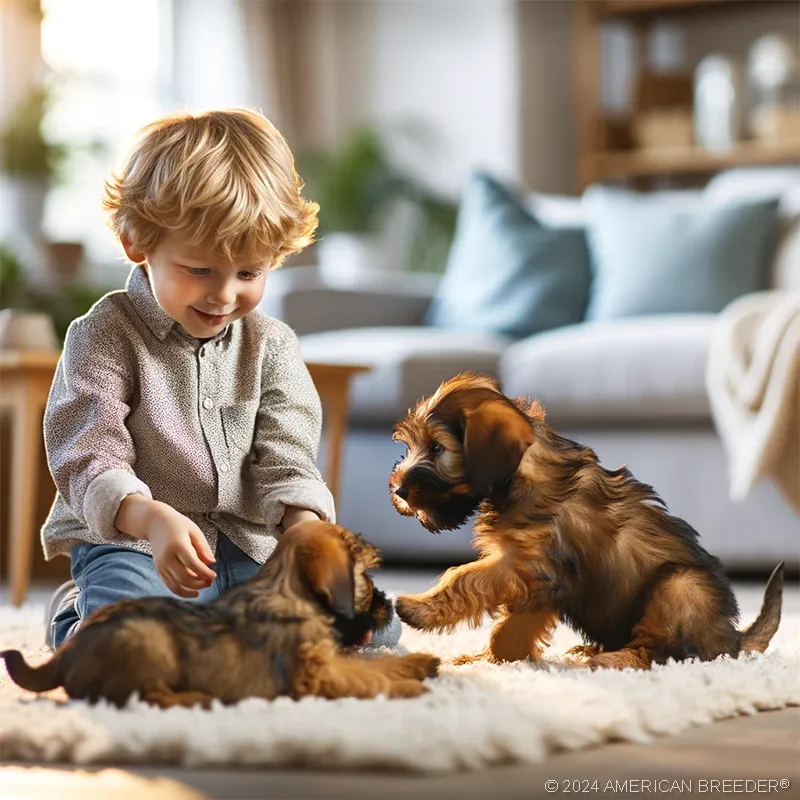 Level of Playfulness:
Level of Playfulness:
When it comes to playfulness, the Otterhound takes the cake! Their love for water and their boundless energy make them excellent playmates for both children and adults. Whether it's a game of fetch by the lake or a splashy water adventure, the Otterhound's playfulness will fill your days with joy and laughter.
Level of Intelligence:
The Otterhound's intelligence is evident in their problem-solving skills and their ability to quickly learn new commands. They are independent thinkers and may occasionally choose to do things their way, which adds an element of intrigue to training sessions. Embrace their cleverness and offer engaging training exercises to keep their minds sharp and active.
Affection Level and Desired Attention:
Otterhounds are affectionate and loving dogs that form strong bonds with their human families. They enjoy being involved in family activities and thrive on attention and interaction. Regular playtime, cuddles, and quality time together will be deeply appreciated by your Otterhound.
Friendliness Toward Strangers:
With their friendly and sociable nature, Otterhounds are generally welcoming to strangers. They may not be the best guard dogs, but they make up for it with their warm and approachable demeanor. Early socialization is essential to ensure they remain confident and comfortable around new people and situations.
Health and Care:
Caring for your Otterhound's health is vital to ensure they lead a happy and fulfilling life. While the breed is generally healthy, like all dogs, they can be prone to certain health issues. It's essential to stay informed about these potential health concerns and work closely with a reputable veterinarian to provide the best care for your furry friend.
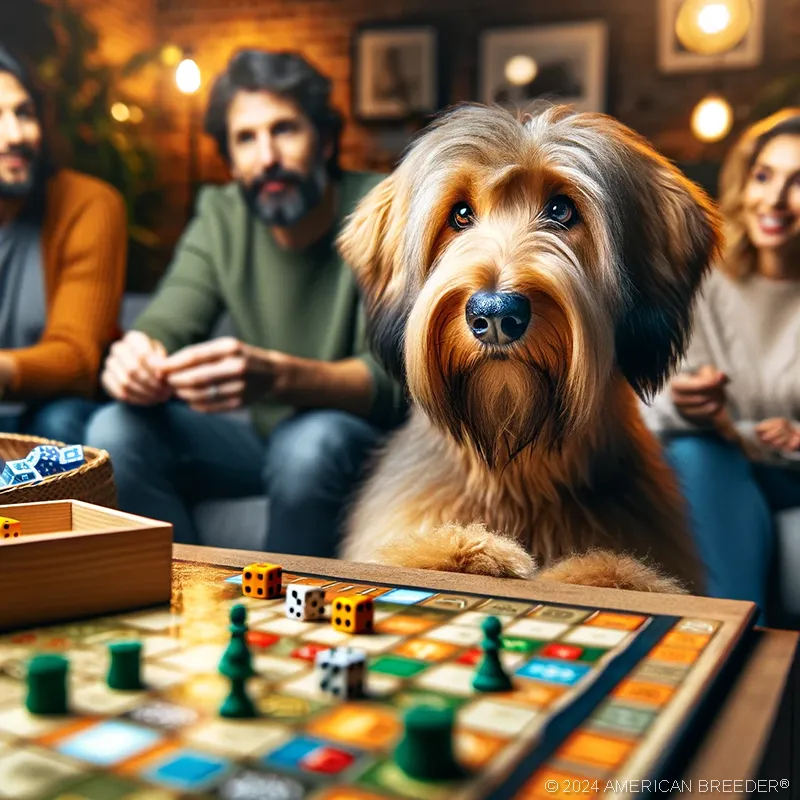 Common Health Issues:
Common Health Issues:
Some common health issues that can affect Otterhounds include hip dysplasia, an inherited condition where the hip joint doesn't develop properly, leading to joint problems and pain. Elbow dysplasia, a similar condition, can also be a concern. Bloat, a life-threatening condition, is another issue that large and deep-chested breeds like the Otterhound may face.
Allergies and Specific Dietary Considerations:
Like any dog, Otterhounds can develop allergies to certain foods or environmental factors. Keeping an eye out for signs of itching, skin irritation, or digestive issues can help identify potential allergens. Consult with your veterinarian to determine the best diet and any necessary dietary adjustments.
Lifespan and Longevity Expectations:
With proper care, Otterhounds can enjoy a lifespan of around 10 to 13 years. To ensure your furry friend enjoys a long and healthy life, provide regular exercise, a balanced diet, and routine veterinary check-ups.
Grooming Requirements Based on Coat Type and Size:
The Otterhound's distinctive double coat requires regular grooming to maintain its health and appearance. Brushing their shaggy fur two to three times a week will help prevent matting and remove loose hairs. Occasional baths, especially after outdoor adventures, will keep them smelling fresh and clean. Additionally, check and clean their ears regularly to prevent infections.
Exercise Needs and Recommendations:
Being a high-energy breed, the Otterhound needs plenty of exercise to stay physically and mentally stimulated. Engage them in daily activities such as brisk walks, playtime, and, of course, swimming! They'll relish any opportunity to splash around in water, so trips to the lake or beach will be a hit. Keeping them active will not only keep them happy but also prevent them from engaging in destructive behaviors out of boredom.
Nutrition and Feeding Guidelines:
Providing a balanced and nutritious diet is crucial for your Otterhound's overall health and well-being. High-quality dog food, appropriate for their age and size, will ensure they receive the necessary nutrients. Avoid overfeeding, as the Otterhound can be prone to weight gain. Instead, monitor their food intake and adjust portions based on their activity level and metabolism.
Socialization and Compatibility:
The Otterhound's friendly and easygoing nature makes them wonderful companions for families with children and other pets. Early socialization is crucial to ensure they develop into well-mannered and confident adults. Exposing them to various people, animals, and environments will help them feel at ease in different situations.
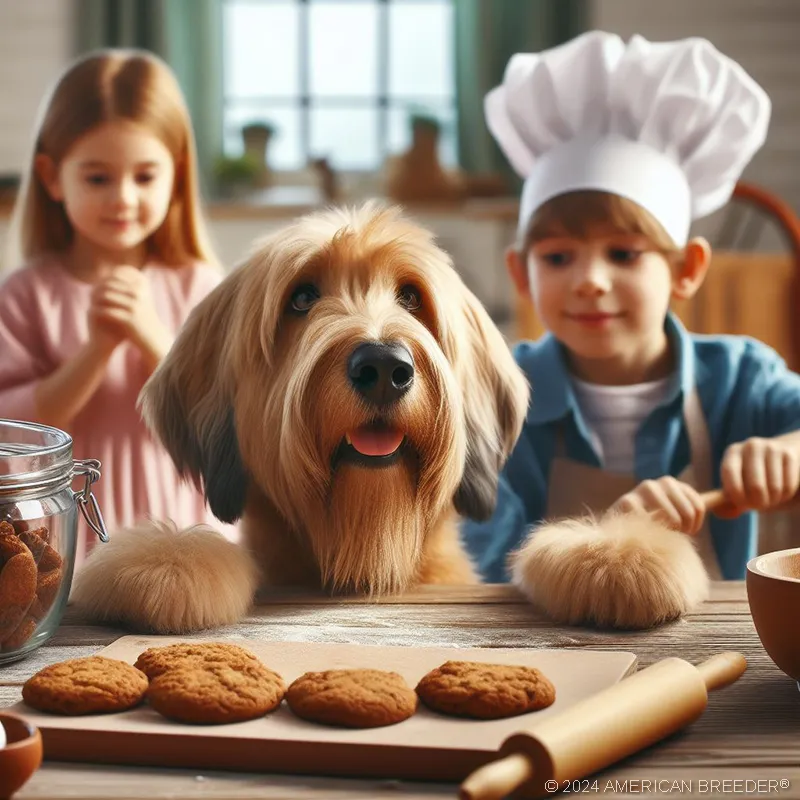 Interaction with Children, Other Pets, and Strangers:
Interaction with Children, Other Pets, and Strangers:
The Otterhound's gentle and patient demeanor makes them excellent playmates for children. They are known for their patience and tolerance, but, as with any dog, supervision is essential during interactions with young children to prevent accidental rough play.
The Otterhound's sociable nature extends to other pets as well. With proper introductions and early socialization, they can get along well with other dogs and even smaller animals like cats.
Socialization Needs and Tips:
To ensure your Otterhound grows up to be well-adjusted and friendly, expose them to different experiences from a young age. Take them on outings to pet-friendly parks, introduce them to various people, and provide positive interactions with other dogs. Positive reinforcement during socialization will create positive associations and set the foundation for a confident and well-behaved adult dog.
Precautions or Considerations for Multi-Dog Households:
If you have other dogs in your household, ensure that introductions between them and your new Otterhound are done gradually and in a controlled environment. Provide each dog with their space and resources to avoid potential conflicts.
Ease of Training:
The Otterhound's intelligence and desire to please their owners make them trainable, but their independent nature can pose some challenges. Consistent training and positive reinforcement techniques are essential for success. Keep training sessions engaging and reward-based to maintain their interest and enthusiasm.
Living Arrangements and Environment:
The Otterhound's adaptability makes them suitable for various living arrangements, but a few considerations should be taken into account to ensure their comfort and well-being.
 Suitability for Different Living Arrangements:
Suitability for Different Living Arrangements:
While the Otterhound's size may make them appear better suited to larger homes, they can adapt to apartment living with the right care and exercise. Living in a house with access to a secure yard is ideal for them to explore and play freely.
Space Requirements and Exercise Options:
The more space your Otterhound has to roam and explore, the happier they'll be. A securely fenced yard provides a safe environment for them to burn off energy. Daily walks and outings to parks or natural areas where they can enjoy water activities are also crucial for their happiness and well-being.
Climate Considerations and Adaptability:
The Otterhound's thick, water-resistant coat provides some insulation, making them more adaptable to colder climates. However, they can still enjoy living in warmer regions with proper precautions, such as providing shade and access to water during hot days.
How Big of a Yard Should a Person Have with This Type of Dog?
While a large yard is beneficial for an Otterhound, it's more important to focus on providing ample opportunities for daily exercise and playtime. Regular outings to parks or natural areas where they can explore and engage in their beloved water activities are just as essential as having a large yard. Otterhounds are energetic and active, so any space that allows them to run, play fetch, and have some water fun will be greatly appreciated by this adventurous breed.
Training and Obedience:
Training an Otterhound requires patience, consistency, and a good sense of humor. While they are intelligent dogs and quick learners, their independent nature can sometimes make them a bit stubborn during training sessions. To effectively train your Otterhound and build a strong bond, consider the following tips and techniques:
Basic Obedience Training and Commands:
Start with basic obedience training, such as sit, stay, come, and down. Positive reinforcement with treats, praise, and playtime will motivate them to follow your commands. Keep training sessions short, fun, and engaging to hold their interest.
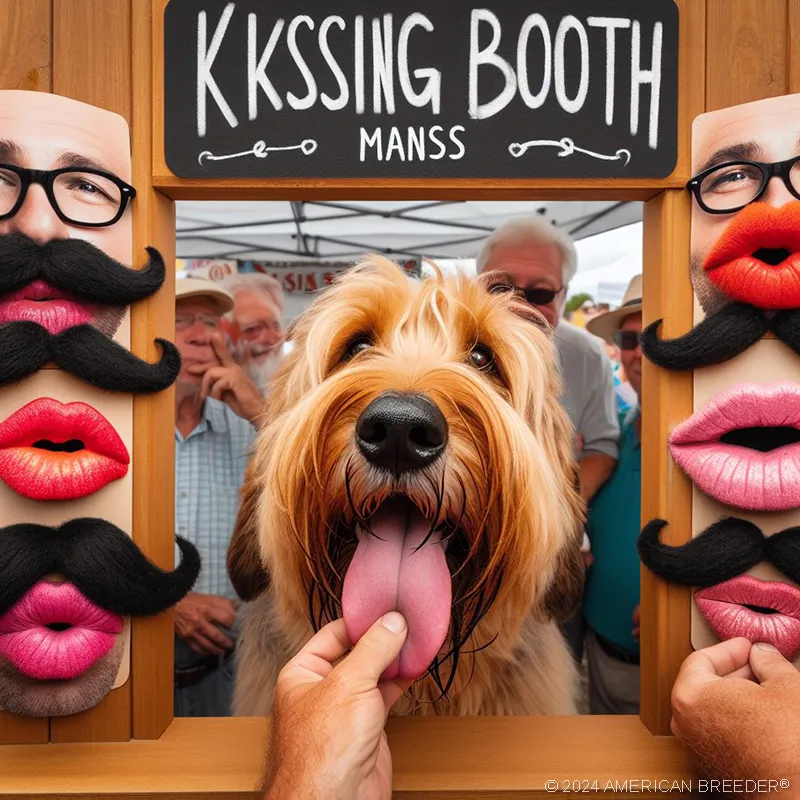 Leash Training:
Leash Training:
As scent hounds, Otterhounds have a keen sense of smell and may become easily distracted during walks. Leash training is crucial to ensure they don't lead you on an impromptu scent-seeking adventure. Use positive reinforcement to reward them for walking calmly by your side.
Recall Training:
Recall training is essential for off-leash activities, especially near water bodies. Engage in recall training in a secure, enclosed area, using treats and praise to reinforce the command. Remember that their instinct to follow their nose might lead them astray, so practice recall commands regularly.
Behavioral Challenges and Training Considerations:
Like all dogs, Otterhounds can exhibit certain behavior issues that need addressing. Here are some common challenges and tips on how to handle them:
Barking: Otterhounds may bark to alert you or when they're excited. To control excessive barking, provide them with enough physical and mental stimulation. Reward them when they're calm and quiet.
Digging: Their digging instinct might be hard to curb, but providing an area in your yard for supervised digging can help redirect this behavior. Toys and games that stimulate their minds can also help keep their paws occupied.
Separation Anxiety: Otterhounds form strong bonds with their families, and prolonged periods of alone time can lead to separation anxiety. Gradually introduce them to being alone and provide toys or puzzles to keep them occupied while you're away.
Financial Planning:
Owning a dog, especially a large and active breed like the Otterhound, comes with financial responsibilities. Consider the following aspects to plan for your new furry family member:
Typical Price Range for Purchasing from a Reputable Breeder:
Otterhound puppies from reputable breeders can range from $1,500 to $3,000, depending on the breeder's reputation and the puppy's lineage.
Initial Costs:
In addition to the purchase price, initial costs may include vaccinations, microchipping, spaying/neutering, and essential supplies such as a collar, leash, crate, and bedding.
Ongoing Expenses:
Budget for recurring expenses such as high-quality dog food, regular veterinary check-ups, grooming supplies, and toys. Additionally, consider the cost of training classes and any potential medical emergencies.
Considerations for Pet Insurance:
Pet insurance can provide financial security in case of unexpected medical costs. Research and compare different insurance plans to find one that suits your needs and budget.
Overall Summary:
Congratulations! You've now journeyed through the wonders of the Otterhound world, and you're well-equipped to welcome this amazing breed into your life. The Otterhound's playful nature, love for water, and affectionate personality make them the perfect companion for families who lead active lives and adore outdoor adventures.
Remember, being an Otterhound owner is not just about having a dog—it's about embracing a furry friend who will enrich your life with love, loyalty, and a unique zest for life. Their love for water will create cherished memories of splashing fun and countless smiles. Embrace their playful spirit, train them with kindness and patience, and watch as they fill your days with joy and laughter.
With responsible ownership, a commitment to their well-being, and a whole lot of love, you'll have a devoted and loving Otterhound by your side, ready to embark on any adventure life throws your way. Here's to wagging tails, endless water play, and an everlasting bond between you and your extraordinary Otterhound companion!
Otterhound Dog Quick Reference Guide
Breed Background: Origin: United Kingdom | Breed Purpose: Otter hunting | AKC Class: Hound Group | Year Recognized by AKC: 1909
 Appearance: Size: Large | Weight: 80-115 pounds | Coat Type: Dense, shaggy | Colors & Patterns: Various hound colors, often grizzle and tan | Distinctive Features: Long, pendulous ears, and webbed feet
Appearance: Size: Large | Weight: 80-115 pounds | Coat Type: Dense, shaggy | Colors & Patterns: Various hound colors, often grizzle and tan | Distinctive Features: Long, pendulous ears, and webbed feet
Temperament: Energy Level: 3 | Friendliness to Pets: 4 | Friendliness to Strangers: 3 | Trainability: 3 | Playfulness: 4 | Frequent Barker: 3 | Chase Instincts: 5 | Sense of Smell: 5 | Drive to Hunt: 5
Health & Care: Health Issues: Prone to hip dysplasia and bloat | Lifespan: 10-13 years | Grooming Difficulty: Moderate | Exercise Needs: High
Socialization: Interaction with Children: Good, patient | Interaction with Pets: Generally good | Interaction with Strangers: Reserved | Ease of Training: Moderate
Suitable Living Arrangements: Apartment: Not recommended | House: Preferable | Rural Area: Ideal | Yard Size Requirements: Large, securely fenced yard
Training & Obedience: Trainability: 3 (Moderate) | Intelligence: 3 (Moderate) | Obedience: 2 (Low) | Problem-Solving: 4 (Advanced) | Easily Stimulated: 3 (Moderate) | Focus Level: 3 (Moderate) | Easily Distracted: 4 (High)
Financial Planning: Typical Price Range: $1500 - $2500 | Initial Expenses: Puppy vaccinations, supplies | Ongoing Annual Expenses: Food, grooming, vet visits
Breeding: Reproductive Maturity: 12-24 months | Litter Frequency: 1 per year | Litter Size: 6-10 puppies | Stud Cost: $800 - $1500 | Breeding Challenges: Finding suitable mates can be challenging due to the breed's rarity
Did You Enjoy this Article? Share it and Help Us Spread the Word!
If you found this article helpful, we'd appreciate it if you could share it with your friends or link to it from your website, blog, or group! You can also use the convenient social share tabs on the left side of the screen to instantly share this page to your social media feed. For more ways to support and promote the American Breeder Community, visit our Share & Promote Together page for social media posts and memes you can copy and share. Your support means the world to us!
Disclaimer: The information provided in this article is for general informational purposes only and does not constitute legal, medical, financial, or professional advice. While we strive for accuracy, we make no representations or warranties regarding the completeness, accuracy, reliability, or suitability of the information. Please consult with a professional before making decisions based on the content provided. American Breeder Inc. assumes no responsibility for any errors or omissions or for the results obtained from the use of this information.
